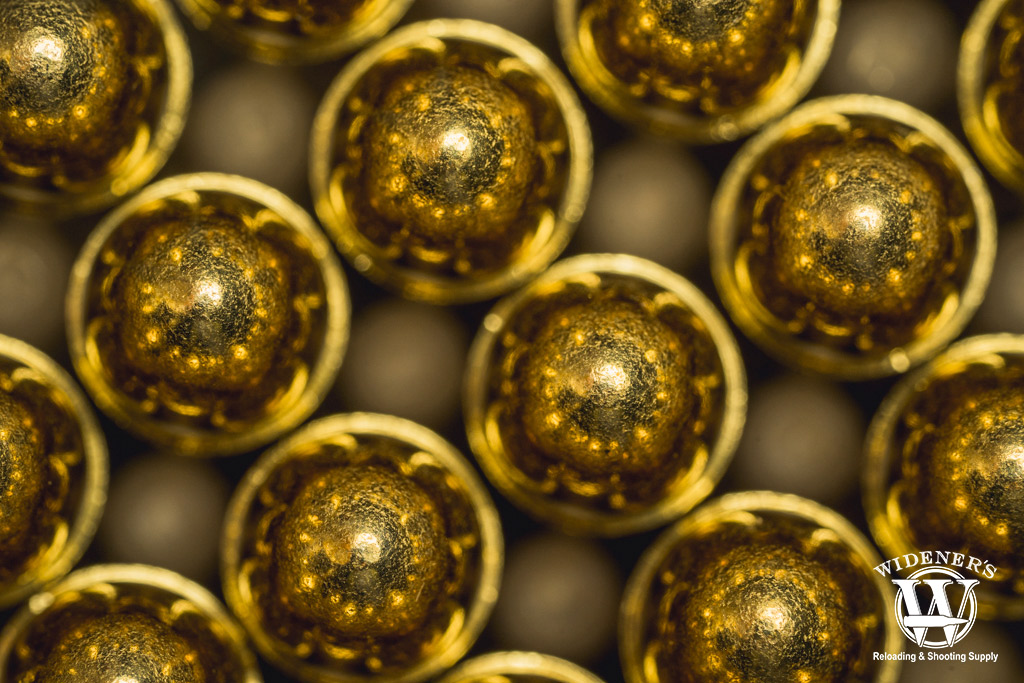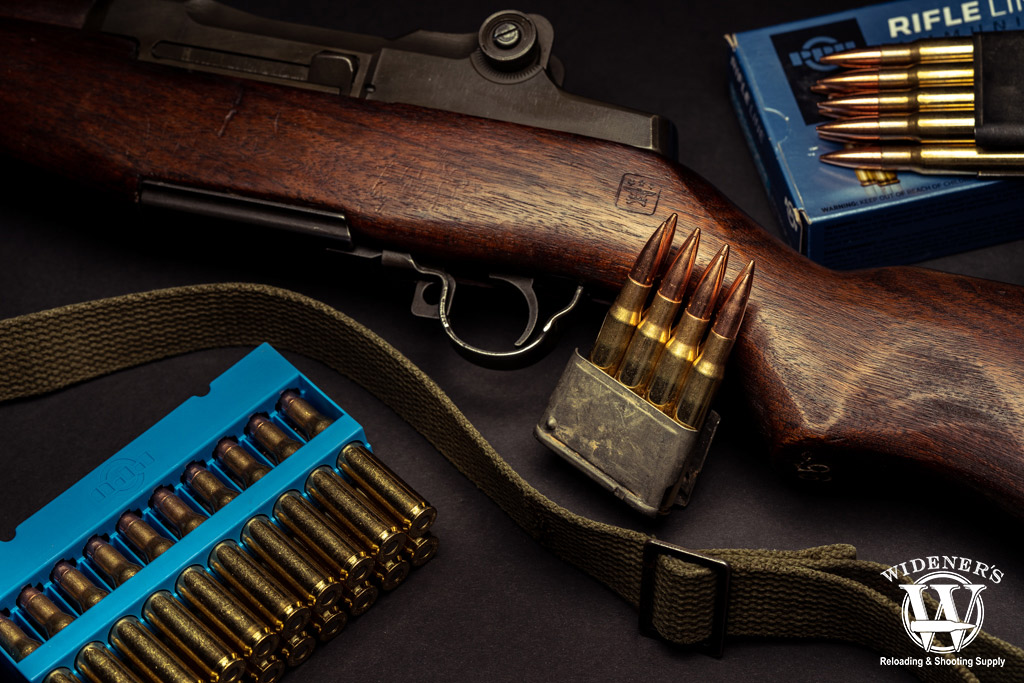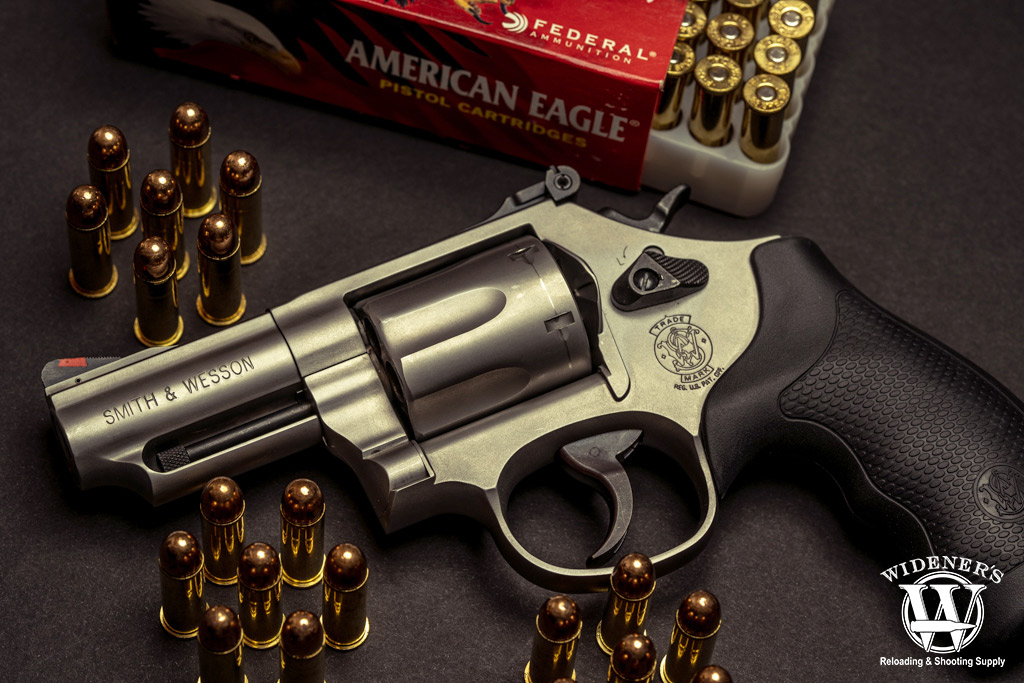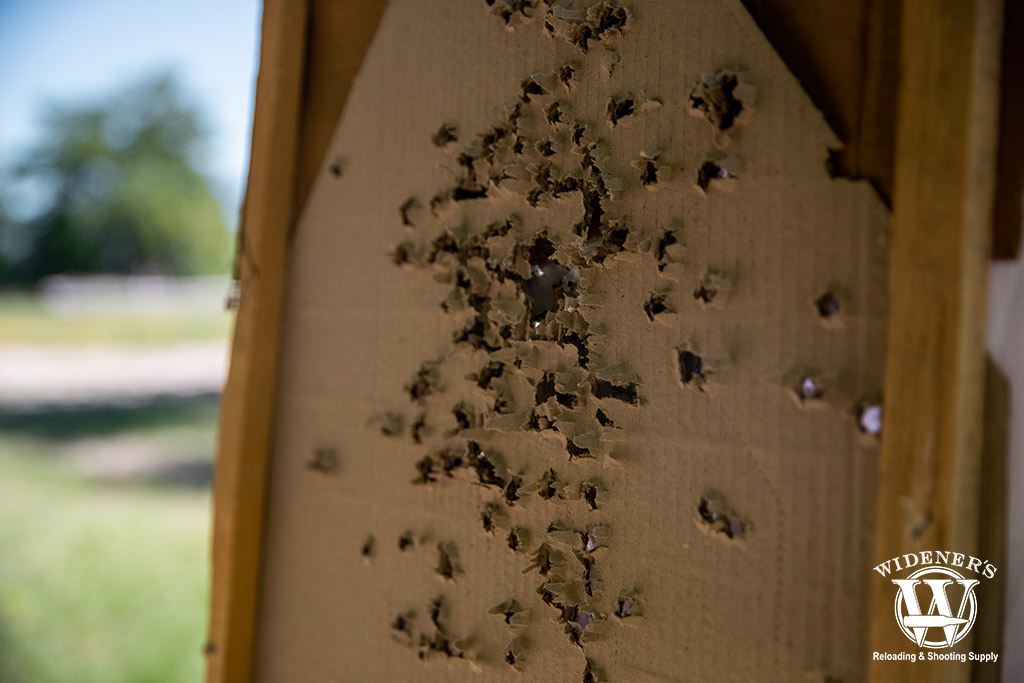

By Guy J. Sagi
Shooters often use the term “ball ammo” to describe cartridges with a full metal jacket bullet (FMJ). Although the jargon hints that the projectile is spherically shaped or contains some sort of hidden “ball” within, neither is true.
It’s the least-expensive ammunition—on average—available to civilian gun owners and accounts for the bulk of U.S. military small arms munitions. It’s clean, reliable, accurate and the favored fodder for practice, competition and informal range sessions.
Modern bullet design has slightly blurred ball ammo’s precise definition, however, which can make the term confusing to new gun owners. Here’s a look at likely origins of the name, what it means and what it does not.
Does “Ball” Mean Round?

Is ball ammo actually round? Not really. The name historically refers to the often round-nose FMJ projectile.
Not everyone agrees on how the term “ball” grew to accepted status. Most concur it probably began when firearms finally found their way into widespread military use. During this time most smoothbore muzzleloaders used rounded balls of lead for projectiles.
French Connection
The 1849 introduction of a new bullet seems to endorse the theory. Despite the fact the cylindrically shaped breakthrough from Claude-Etienne Minié had a conical point, its name—the Minié ball—indicates all military-issue bullets for small arms, regardless of their profile or composition, wore the suffix.
The French Army officer’s innovation was slightly smaller than the diameter of the barrel’s bore. This was to decrease the time required to load it from the firearm’s muzzle end. Its most important feature, however, was a hollow base with iron insert that expanded to engage rifling when the gunpowder ignited behind. The design improved accuracy and effective range.
American Made
James Burton, who was working at the United States Arsenal and Armory at Harpers Ferry at the time, improved the projectile in the early 1850s. His bullet was just as effective, but less expensive and easier to produce. Many historical documents refer to this iteration of the Americanized bullet as the “minnie ball.” When the Civil War began in 1861 both sides were using it widely. A fact that likely contributed to ball ammo’s indelible entry into the firearm lexicon.
It’s tradition, according to this theory, for frontline U.S. troops to refer to their standard-issue ammunition as ball. It accurately reflected bullet profile when we earned our independence. Because the term hasn’t lost traction in nearly 250 years, there’s likely more to its longevity than just habit.
Powder Playing Hardball?

.30-06 ball ammo loaded with ball powder was a common ammo option for the US Military issued M1 Garand.
One camp of opinion claims the term became permanently embedded after the introduction of ball powder during World War II. The propellant, which is safer and faster to produce than extruded powder, only became widely available to civilian reloaders in the 1960s, however.
Others contend the FMJ bullet’s propensity for passing through barriers, enemy combatants and continuing downrange in search of secondary and tertiary targets earned it the nickname “hardball.” Shortened to ball it rolls off lips faster and sounds less offensive to sensitive eavesdroppers.
Each theory has merits, and all likely contributed to ball ammo becoming an accepted firearm term. Regardless of the origin, qualification for membership on the ball ammo roster comes down to bullet construction and performance.
Metal Jackets Required
Firearms with rifling improved accuracy, period. Historically, lands and grooves had a habit of collecting some of the soft lead from those standard-issue minie balls used during the Civil War. That fouling compromised accuracy and slowed reloads.
Swiss Col. Eduard Rubin solved the problem in 1882. He added a thin skin of copper to the surface of a lead bullet—creating the first full metal jacket. We know historically the guns ran cleaner with this new projectile. The higher melting point allowed designers to increase powder charges in their unending search for increased velocity, flatter trajectories and more power.
Unlike its entirely lead predecessor, which flattened or lost integrity on impact, FMJs remain largely intact and unaltered after striking soft-tissue targets—at least when delivered at velocities possible from rifles and handguns. The cleaner running, reliably feeding and more accurate bullet design quickly assumed the new standard military ammo crown. Its characteristics are key ingredients in today’s definition of ball ammo.
Modern Ball Ammo

Cheap, reliable and easy to find in-stock on store shelves. There’s a lot to like about ball ammo.
Ball ammo, by today’s standards, are cartridges with jacketed bullets. On average, they do not change significantly in shape or surrender an undue portion of their mass when striking a game animal or other soft tissue. In handgun ammunition most “ball” bullets are round on the business end, often semi-spherical. Versions for rifles usually come to a conical point to improve aerodynamic stability.
Bullet profile can vary, and pure lead interiors aren’t necessarily requisite. The U.S. military, for example, has used a 5.56 NATO round often termed ball ammo, yet the bullet has a steel core.
Some of the cartridges that fail to qualify include those with hollow-point bullets. Tracer rounds, polymer-tipped bullet loads, those with frangible projectiles and virtually every flavor that does not have an FMJ bullet are not ball.
Ball Ammo Disadvantages

FMJ bullets tend to go through a lot more than just cardboard targets, you’ll want to know what’s behind your target before firing.
Bullets delivered from ball ammo don’t slow much when striking soft tissue, like a big-game animal. That reduces the chances of an ethical, one-shot stop. The fact also makes it nominal for self- and home-defense use for the same reason. Bullets exiting a target may strike something unintended downrange.
The FMJ bullets also pass through barriers like metal, wood and glass with relative ease—depending on impact velocity and material breached. That’s a slight advantage for members of our Armed Forces. Terrorists like to hide behind cover, after all. For law-abiding citizens defending themselves against criminal attack, or even hunters, it’s far from ideal for a bullet to travel to destinations unknown.
Ball Ammo Advantages
Cost is the most-often-cited advantage of using ball ammo. It’s inexpensive, particularly when bulk, non-corrosive military surplus cartridges are available.
Reliability is key. The softer lead core is covered by a metal that is less prone to dents and dings. Bullet wear is common as a bullet glides out of the magazine and onto the feed ramp. Stoppages and malfunctions most often occur during the cycling of the round. This bullet design has been around for more than 100 years and these loads are among the most reliable available today.
Ball ammo runs extremely clean and is exceptionally accurate. For lengthy range sessions, competition and informal plinking, it’s hard to beat. Add the price and it’s obvious why these loads, despite the geometrically inaccurate label, are so beloved by knowledgeable firearm enthusiasts everywhere.


